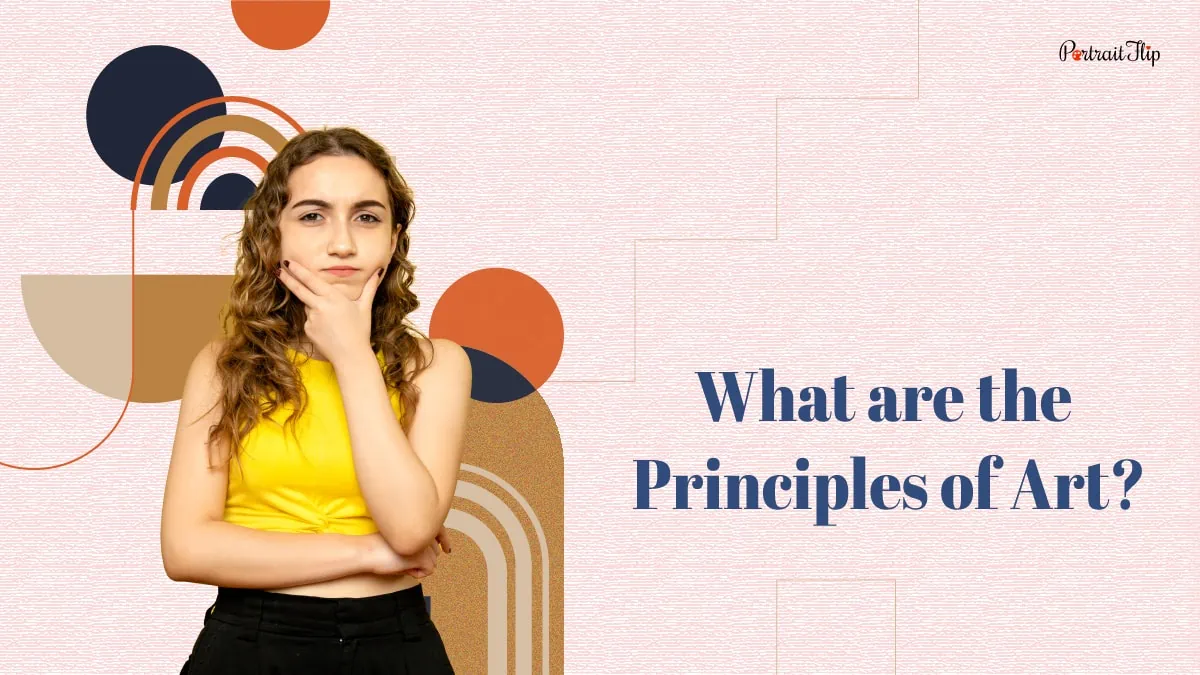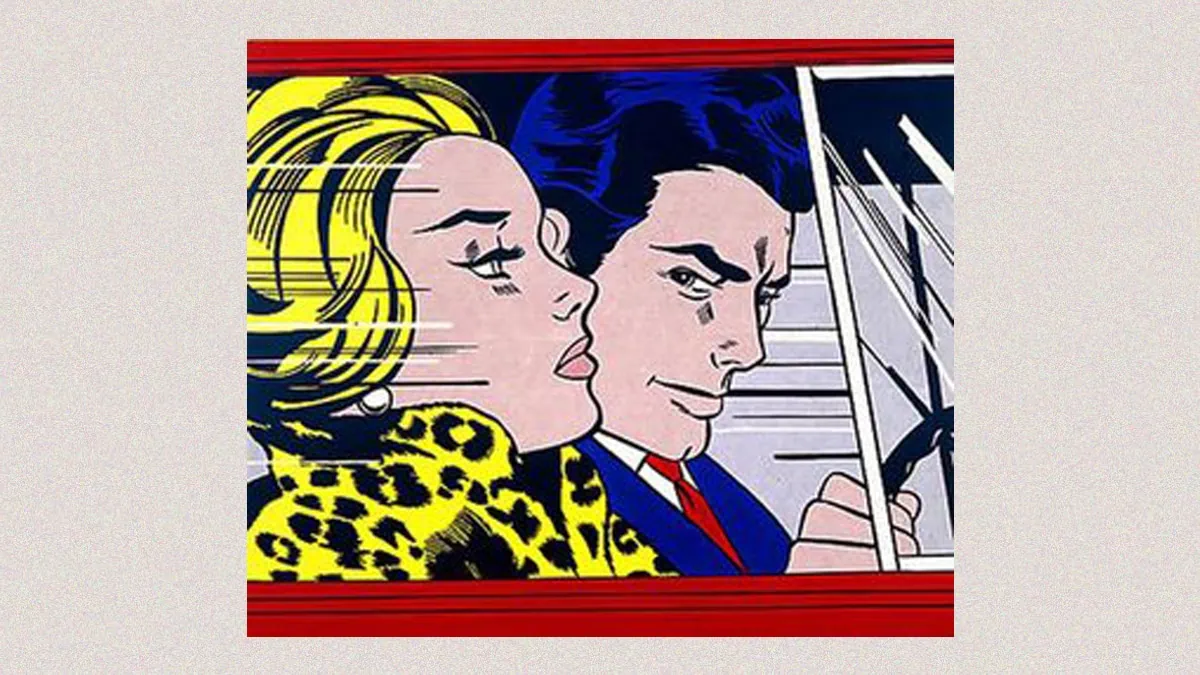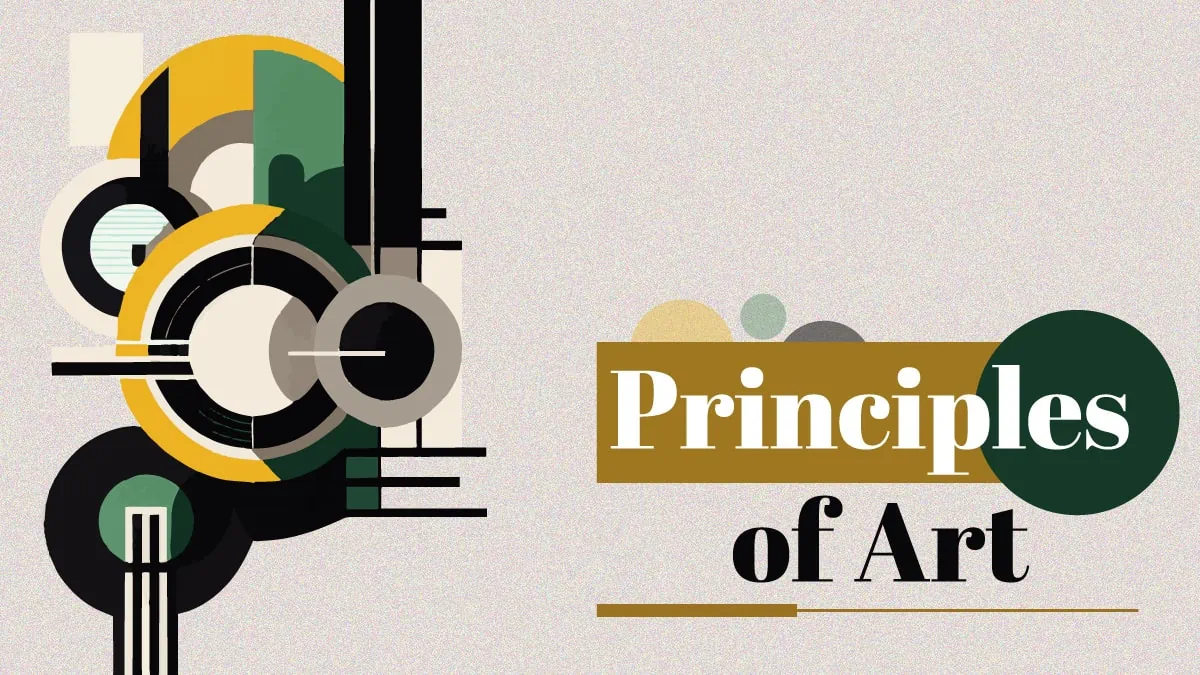Have you ever wondered what it takes for a painting to get so popular?
We already know that its composition and elements play a key role in its success.
But don’t you think that there can be some set of rules that it adheres to?
Well, yes there’s some. These are the Principles of Art!
Now you would wonder, “But can art be really made with a set of rules? Won’t that limit the artist’s creative freedom?”
If you look at art and its creator’s thought process, you’ll learn that it is as vast as the ocean and nothing can really limit it.
However, art is something which we can have access to whichever way we want or an artist wants to.
In simpler terms, art principles may appear as a broad concept but act as a foundational language that help artists conceptualize their piece.
These principles of art go hand in hand with the seven art elements!
Let us dive deeper into these principles of art and learn how they are connected with different art elements.
This article will further take you through each principle of art and how they are applied by artists in their paintings.
To start with, let us understand what exactly does one mean by principles of art!
Table of contents
What are the Principles of Art?

The techniques or perspectives an artist uses to compose an art piece is what is called the principle of art.
of how an artist chooses to use and implement art elements to create an artwork is called the principles of art.
There are seven art principles that are widely known among the artist world.
They are: Unity, Balance, Contrast, Emphasis, Movement, Pattern, and Rhythm!
Apart from this, some of you may also come across some other principles like Variety, Harmony, Scale, and Proportion.
Because the above few are also intertwined with the other seven, they are often not studied separately nor come in the top seven!
Now these are all familiar terms, but what do they actually mean with respect to art and painting? — Let’s find out!
The 7 Art Principles Explained
To understand these principles of art, let us also look at examples, which are paintings by renowned artists, to understand their approach.
1. Unity in Art

Unity in art is when to form a whole unit or piece of art, different components are used to create it.
The components are chosen by the artists to create something that unifies the whole artwork.
The three most common elements used to acquire unity in art are Proximity, Repetition, and Simplicity.
The art principle, Variety, is also closely associated with unity.
This is because when the elements are used together excessively, they end up creating more variety!
The above painting, “I Know Why The Caged Bird Sings”, by Bisa Butler, is one of the perfect examples to show unity in art.
2. Balance in Art

Balance in art is basically the distribution of the elements done by artists while creating an artwork.
This distribution is often between the elements, objects, colors, texture, and space.
When the balance in art is created it also enhances the visual weight of all the elements used in the paintings.
The four types of balance in art are: Symmetrical balance, Asymmetrical balance, Radial balance and Crystallographic balance.
Frida Kahlo’s self-portrait, “Necklace of Thorns and Hummingbird”, closely demonstrates the balance of art!
The color distribution, the symmetry formed, the layers and even dimensions of the art are well balanced to create a masterpiece!
3. Contrast in Art

Contrast in art is one of the principles of art depicted when any two elements are chosen by the artist to be used in opposite ways.
This is done because when used in opposite ways these elements compliment each other and increase the focal point of the art.
But what’s the focal point of an art, you’d wonder?
It is the part of any painting or artwork that gains maximum attention with high visual interest.
Gerard van Honthorst’s “The Procuress” shows a brilliant play of contrast in art, where we see the contrast between light and shadow!
4. Emphasis in Art

When the artist creates a focal point to make sure a specific element of the artwork is emphasized, it’s called bringing Emphasis in Art!
The techniques used to create this emphasis can vary from artist to artist.
This also gravely depends on the element they choose to work with.
Talking about bringing emphasis, no one did it better than Rene Magritte with his infamous painting “The Son of Man”.
Hiding the face of the man carries a direct message of addressing why modern business men had to hide their identity from society.
5. Movement in Art

Movement in art is all about the drama!
It is the extravagant touch that artists add to a painting to make the viewer engage with the artist to the maximum extent!
These paintings will almost seem like they have movement art principles in them.
Creating this sense of movement in their art is also done by artists by choosing specific elements that enhance this effect.
The creation of illusion for the viewer’s eyes helps them connect with the art easier, which is again seen in Roy Lichtenstein’s “In the Car”.
One look at the painting and we know the man has stepped on the accelerator and the car is speeding!
6. Pattern in Art

Pattern in art is formed when an artist chooses to repeat the visual elements.
This uniform repetition is again studied separately among principles of art but it is widely connected with pattern art principle.
I am sure there are some patterns that you cannot miss out and in fact intrigues you even further.
When you observe any artwork you’ll notice spirals, waves, circles and even grids.
This principle of art can be best experienced with William Morris’s “Strawberry Thief”.
The painting is filled with beautiful floral designs that follow a pattern and even mirror each other.
There is not only repetition but also symmetry followed with the use of this principle of art!
7. Rhythm in Art

Now Rhythm in art is one of the principles of art that is again closely associated with pattern and movement.
A rhythm is formed with any kind of movement.
This movement need not be uniform, but definitely with some kind of organization and aesthetics.
Unlike pattern, rhythm does not need any kind of uniformity or consistency, but at the same time it is very capturing!
For example, Maurits Escher’s “Lizard (No.56)”, is an extremely intriguing painting that demonstrates rhythm in art.
As you can see, one can keep staring at the painting, trying to figure out the pattern, and maybe even count the number of lizards!
Wrapping it Up: The Importance of Art Principles

There you go!
We have done an easy and quick run through the seven principles of art and how they are implemented by the artists with different elements on their artwork.
Coming to the importance of art principles, it is very evident how each principle has its unique way of determining if a painting becomes a masterpiece or not!
That said, another thing to note is also how art principles also utilizes all the art elements we know of.
If you have any more queries or want to venture into each of the art principle, you are welcome to do so in this space we have created for you.
Also, feel free to reach out to us in the comment section.
I’ll be with you soon with another blog, till then,
Ciao xx
Frequently Asked Questions
There are mainly seven art principles that are studied and implemented by artists while making art. But apart from these there are also other principles like Scale, Variety, Harmony etc. that are connected with the main seven principles.
Elements of art act as building blocks or fundamental tools used to create art while also implementing different art principles. The seven elements are line, shape, value, space, form, texture and color.
No, space is not a principle of art as it is an art element. Space is often misinterpreted with “Scale” which is an art principle.





